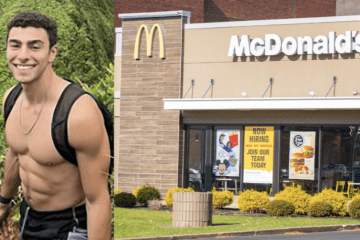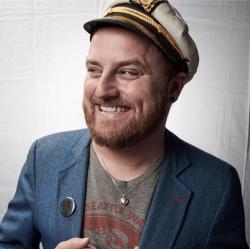San Francisco Mayoral Candidate Reed Martin
Since I have a big, loud, obnoxious voice in The Bay Area, I figured I’d lend it to my fellow mayoral candidates who also want to see Ed Lee dethroned. Not everyone has the millions of dollars that Lee has or the reach that I do, so it’s only fair to help give them a boost. This time we have Reed Martin
San Francisco has a grand future ahead of it.
- Systemic Housing Policy Shift.
- It’s time to overhaul how we think about housing, re-define it as a human necessity and work to remove it from the speculative market through policies like a vacancy tax or residency requirement. There’s plenty of opportunity for investment in San Francisco, let’s use it to fund new ventures, not on the backs of our homes.
- Overhaul rent control. Protecting length of term for tenants in pre-1970s housing is not comprehensive, nor well-aligned to economic realities. It favors time without regard for income, it seemingly arbitrarily applies only to certain units, and it pits landlords against tenants far too often. Our rent model must apply equally to all units in San Francisco, support incomes at every level, and align landlord and tenant interest wherever possible.
- Balanced Rent: my vision for income-weighted rent. In a constrained environment, supply/demand always favors the high-end. While we should continue to grow our housing units, it can’t come fast enough for over 60% of San Franciscans that are already priced out. Balanced Rent distributes demand power more evenly across income levels, creating a more equitable rent model that gives people a fighting chance.
- “Affordable Housing” is broken. We’re creating a two-tier model under the guise of helping those who aren’t at the top. A high-end housing developer creating “affordable” units simply doesn’t make sense and isn’t the right way to approach this problem.
- Reducing barriers to common-sense housing across the city, while strengthening laws to protect vital architecture and character. San Francisco victorians are incredible. Let’s protect them. But if you own a 1960’s-era stucco single family home in the Sunset, you should be able to easily build a new 4-6 story apartment building in its place. We need to encourage more human-scale growth. San Francisco does not need to become Manhattan.
- Development by San Franciscans, for San Franciscans. Development should not be something that happens to us. Community meetings are set up to fail because communities are bearing all of the pain and none of the benefits, and we create unneeded tension. We need development policies that makes it simple for local San Franciscans, neighborhoods, and organizations to finance and develop housing.
- Comprehensive Transportation Network
- It’s time for Muni to rise to world-class status and build out a network of high-speed, high-frequency, automatic trains. This has been built for as little as $200 million per mile in other cities in North America, and has increased ridership 700% while decreasing duration by 75% in cities like Vancouver. Outer Richmond to Downtown in under 15 minutes.
- Let’s work with Peninsula and South Bay tech companies to help fund a real public transit network in SF and beyond, making it faster and more efficient for their employees and accessible to everyone. It’s estimated that these companies pay hundreds of millions of dollars per year to run private transportation. Let’s put that to building public transit.
- Dedicated transit on the Bay Bridge. While we should evaluate a second transbay tube, we should immediately claim two lanes on the Bay Bridge as transit-only and begin running extended-length tram-like buses. This can also grow into light rail for higher capacity.
- Muni Connect: my vision for on-demand Muni. In conjunction with a high-speed network of trains, as we grow that vision, let’s have on-demand Muni vehicles that pick you up where you are and connect you to the high-speed network.
- Multimodal transportation. From bikeshare to electric bike and scooter share to one-way car share, we need to embrace transportation innovation across the board. From last-mile connections to picking up goods to better exercise, a complete transportation network includes a full range of options. In addition, transit and shared services help reduce congestion and parking constraints for those who drive.
- Local Business Expansion and Protection
- We need to increase commercial and retail access across the city, not only on commercial strips. We can start by simplifying zoning and setting clear rules about what commercial activity is allowed in each neighborhood.
- Turning first floor garage space into commercial / retail space should be simplified. The true value of that space may outweigh the value of a car to many residents, while providing new space for small businesses across the city.
- Marklets: Small business incubation. Let’s lower the barrier to creating a new business—vital to giving power to individuals and strengthening our local economy. Marklets is a vision to allow people to get a retail business off the ground with very little overhead through an App-Store inspired revenue sharing model, rather than fixed rent costs.
- Sutro Cash: Keeping our money local. Let’s create a no-fee debit model for payments in San Francisco for everything from city services to utilities to local businesses, rewarding local shopping and local merchants.
- Lunch Checks: stimulating local restaurants. As new larger businesses locate in San Francisco, many opt for cafeterias. This has a negative impact on streetlife and doesn’t allow for these businesses to fully embrace San Francisco. A model pioneered decades ago in Europe could change that. I call it Lunch Checks, where employers would have a tax-free option to provide money specifically for meals in lieu of cash.
- Commercial Rent Protections: Commercial rent control was banned in California decades ago after an overly restrictive measure from Berkeley. The time has come to put pressure on the State to update this bill to allow for mediation in event of extreme rent increases. Far too many small businesses are forced to close quickly and unexpectedly, without sufficient time to react, negotiate, or even make plans. Closure of long-time small businesses can have major impacts on a neighborhood’s affordability and culture, not to mention the livelihood of the owners.
- Vibrant Neighborhoods
- The energy and passion that our streets breathe into the lives of San Francisco are what define our home. Global cities have long recognized that streets are about much more than driving; they sustain our communities. As San Francisco grows, we can’t afford to lose our humanity, our diversity, our cultural heritage, and our vibrancy.
- Duboce Market Halls: Let’s redevelop the Duboce Triangle Safeway as the largest permanent market and food district in the United States. An interior marketplace with room for over 500 independent local stands. Prepared food vendors line the perimeter with covered and open-air seating, surrounded by space for music, performance, and art. Pedestrian-only streets flank the surroundings, with new housing, underground transit, and public-facing retail throughout the market district.
- Paseos: Human-Streets. Today, we continue to promote dangerously high speed traffic, with over 60 pedestrian accidents each month—and three deaths—making San Francisco one of the most dangerous cities for walking in the nation. It’s time to reclaim streets for socializing, playing, shopping, or even exercising, while reducing overall congestion, noise, pollution, and injuries. My vision lays out a plan for how we get here.
- Reinvestment in Environment & Sustainability
- Grey Water: We’re in a crazy water crisis. We need action immediately. All new developments must install grey water systems, reusing sink and bath water for flushing toilets and irrigation. We should extend this to all city departments, requiring grey water usage for city-wide irrigation and hosing of streets, sidewalks, and public spaces.
- Recycled Water: The city must create its own water recycling plants on a municipal level. These recycling plants are built on a process of microfiltration, reverse osmosis, and ultraviolet light to renew fresh water to a pristine state that can be used again
- Creeks: San Francisco has an incredible watershed network below the ground. Many of these sources have actually been used as fresh water sources in the past, despite the majority of them having been moved underground. This neglected water source has the potential to add to our network of fresh water availability, while beautifying the city.
- Public Water and Sanitation: In order to preserve and ensure access to fresh water for every resident in San Francisco, installing a comprehensive network of public fountains in the city can help ensure we have water today and in times of great need.
- Clean Power: In conjunction with moving Clean Power SF forward, we need to invest in a resilient, renewable, and distributable power grid in San Francisco. Every building should do its part to generate energy. Combined, this mesh network will provide power through the city, even if a number of these units fail in times of crisis.
- Urban Forest: Our urban tree canopy has been neglected for far too long. Let’s follow Friends of the Urban Forest’s vision and implement a comprehensive plan to reclaim and grow its urban forest.
- New Developments should bring more public space. It’s time to grow the Downtown Plan model for POPOS city-wide, and ensure that this development funds truly public parks and spaces, not simply privately-owned ones.
- Adequate funding for Rec & Park. We rely far too often on volunteers to pick up the slack for routine maintenance. Meanwhile Rec & Park is charging for Botanical Garden access and renting out Coit Tower to try and earn extra cash. Let’s ensure our public resources are publicly accessible, fully funded, and well-maintained.
- Our City Fund
- Here’s how you can shape the future after I take office. Under my leadership, City Hall will put 1% of San Francisco’s city budget toward directly funding your ideas. That’s up to $90 million for the direct input of San Franciscans, not profits, to make our city better for every resident. If you have a great idea, I don’t just want to hear it, I want to help you make it a reality.











